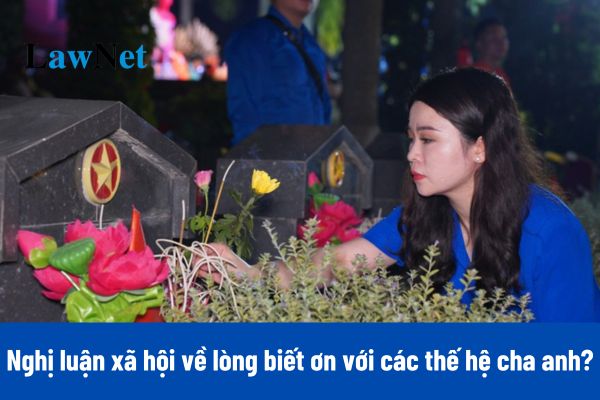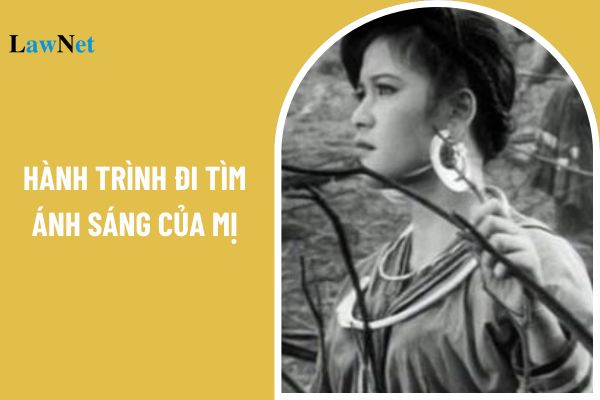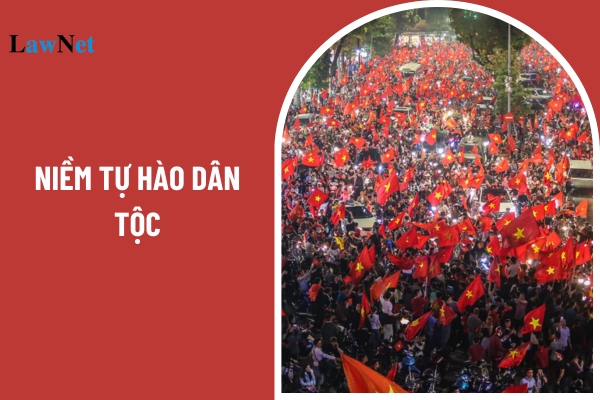What are the 05 best sample argumentative essays on integration without assimilation for 12th-grade students in Vietnam? What are the required outcomes regarding reading comprehension of argumentative texts in the 12th-grade Literature curriculum in Vietnam?
What are the 05 best sample argumentative essays on integration without assimilation for 12th-grade students in Vietnam?
Students can refer to the following 05 best sample argumentative essays on integration without assimilation:
Sample 1
In today's era of globalization, the exchange between cultures, ideas, and lifestyles has become stronger than ever. In this reality, the perspective of integrating without assimilating becomes an important guideline for each individual and every nation to absorb the world's essence while maintaining their own identity. This is not only a behavioral principle but also a profound lesson on how people exist and develop in a constantly moving world.
Firstly, integration is the openness and readiness to embrace new and progressive things from the outside. This is a necessary demand because no individual or nation can develop if they enclose themselves in a shell of conservatism and stagnation. Thanks to exchanging with the world, people have the opportunity to learn advanced thinking, scientific and technological achievements, and profound human values. Without integration, Vietnam would find it difficult to achieve remarkable accomplishments in many fields such as education, economy, technology, or art.
However, not assimilating is the boundary that helps people not lose their identity. Integration does not mean losing roots, blindly following the new while forgetting the traditional values forged through generations. A nation that only copies and borrows without its unique identity will sooner or later become obscure, without a position on the world's cultural map. Historically, Vietnam has absorbed many essences from China, France, the USA, Japan,... but still retains its language, customs, traditions, and strong national spirit.
Reality shows that many countries have succeeded by applying the principle of integrating without assimilating. Japan is a typical example; they have adopted technology and management thinking from the West but still retain traditional values such as the samurai spirit, rituals, and unique culture. Meanwhile, some other countries, because of being too eager to follow global trends, have lost their national identity, leading to cultural dilution and a decline in national integrity.
In Vietnam, this principle is clearly manifested in many fields. We can see this clearly in cuisine, where bánh mì, coffee, phở, dishes with international exchanges, still carry the unique flavor of the Vietnamese. In life, today's youth can wear modern clothes but still preserve the traditional áo dài on special occasions, showing pride in the cultural heritage of the nation. At the same time, we adopt many advanced educational thoughts but still maintain the moral principle of respecting teachers, the beauty of Asian education.
However, there is still a part of the youth that does not correctly understand integration without assimilation. Some have a mentality of favoring foreign things, following Western trends while forgetting traditional values. The lifestyle of pragmatism, selfishness, or the habit of excessively using foreign languages while forgetting the mother tongue are concerning phenomena. Conversely, there are those who are too conservative, refusing all innovations, making themselves backward and difficult to integrate with the world.
So how to integrate without assimilating? The most important thing is that each person needs to be conscious of preserving and valuing traditional values while knowing how to receive the new selectively. Every individual should cultivate independence, independent thinking, not blindly follow trends, but ask the question: Is this really suitable for me? Besides, education plays an important role in guiding the younger generation about national identity, helping them clearly understand their roots to confidently integrate with the world.
In conclusion, integrating without assimilating is an extremely important principle of life and development in the era of globalization. Absorbing the new without losing our distinctive identity is the key to helping each individual and nation develop sustainably. Keeping our identity, people will have roots; knowing how to integrate, people will have a future. That is the right path for Vietnam to reach out to the world while still preserving its national soul.
Sample 2
Vietnam is a nation with a rich and diverse history and culture. Through thousands of years of founding and defending the country, our people have forged good traditional values, clearly expressed in customs, lifestyles, and thoughts of the Vietnamese people. Vietnamese cultural identity is not only a source of pride but also the soul of the nation, creating a unique Vietnam amidst the flow of global integration.
Vietnamese cultural identity is manifested through many elements, from the tradition of valuing education, patriotism, solidarity spirit, to ethical values such as respect for the elders, gratitude for benefits received. In festivals and customs like Tết Nguyên Đán, the anniversary of the Hùng Kings, we see the beauty of culture preserved through generations. Vietnamese cuisine, folk art, áo dài, or traditional architectural values are also unique symbols of national culture.
However, in the era of integration, not a few people are losing their identity due to the mentality of favoring foreign things. Many follow Western lifestyles blindly, from dressing, language to lifestyle, even looking down on traditional values. This leads to concerning consequences such as cultural hybridization, neglect of national heritage, and the risk of losing Vietnamese identity.
To address this situation, education must play a leading role in raising awareness of national culture. Families and schools need to educate national pride and pass on traditional values to the younger generation. Besides, each individual must be conscious of preserving identity, not blindly following foreign trends and losing their roots. Only by doing so can we integrate with the world sustainably without being assimilated.
Sample 3
In the era of international integration, absorbing the essence of humanity is necessary, yet a significant portion loses themselves in this process. They not only forget the traditional values of the nation but also disdain, even deny the cultural identity of their homeland. This is a concerning reality that needs to be condemned and overcome.
Those who assimilate often manifest a tendency to favor foreign things, blindly following Western trends without selection. They imitate foreign lifestyles, clothing, even thinking without understanding the essence. Some prefer using foreign languages over their mother tongue, disdain traditional customs and practices, seeing them as outdated, backward. Not only that, they turn their backs on spiritual values such as patriotism, the principle of gratitude - things that have forged the soul of the nation.
The consequences of assimilation are moral and ethical degradation. Once there are no roots, people are easily swept away by superficial values, living pragmatically, losing national integrity. Cultural hybridization not only makes an individual feel alienated but also erodes national identity, causing weakened community awareness. Nations that lose their identity lose national pride and are gradually assimilated in the flow of globalization.
In the face of that reality, everyone needs to recognize their role in preserving national culture. Do not lose yourself due to favoring foreign things. Learn from the world but do not forget the roots. Proper usage of the Vietnamese language, respecting and preserving traditional beauties, valuing the spiritual values of ancestors is how we affirm national identity. Integration does not mean denying oneself, but enriching one's values.
In conclusion, those who are assimilated are evidence of weakness in the perception of national culture. If we do not know how to preserve and promote our identity, we will soon lose ourselves in the flow of integration. Therefore, everyone needs to have integrity, selective absorption, and always be proud of Vietnamese culture - a culture with a long history and profound human values.
Download 02 sample essays on integration without assimilation.
Note: The content is for reference only!

What are the 05 best sample argumentative essays on integration without assimilation for 12th-grade students in Vietnam? What are the required outcomes regarding reading comprehension of argumentative texts in the 12th-grade Literature curriculum in Vietnam? (Image from Internet)
What are the required outcomes regarding reading comprehension of argumentative texts in the 12th-grade Literature curriculum in Vietnam?
Under the General Education Program for Literature issued with Circular 32/2018/TT-BGDDT, the required outcomes regarding reading comprehension of argumentative texts in the 12th-grade Literature curriculum in Vietnam are as follows:
- Reading comprehension of content
+ Recognize and analyze the content of the thesis, argument points, reasoning, and unique evidence in the text; identify their relationship; evaluate the appropriateness between the argumentative content and the title of the text.
+ Know how to receive and evaluate the content critically; recognize the purpose.
- Reading comprehension of form
+ Analyze and evaluate how the author uses some argumentative maneuvers (such as proving, explaining, commenting, comparing, analyzing, or refuting) in the text to achieve the purpose.
+ Analyze rhetorical devices, vocabulary, affirmative, and negative sentences in argumentative texts and assess the effectiveness of these forms.
+ Recognize and analyze the role of argumentation and expressive language in the argumentative text.
What Vietnamese knowledge does the 12th-grade Literature curriculum cover?
Under the General Education Program for Literature issued with Circular 32/2018/TT-BGDDT, the 12th-grade Literature curriculum covers the following Vietnamese knowledge:
- Preservation and development of the Vietnamese language
- Logical errors, ambiguous sentences, and how to correct them
- Rhetorical devices in irony, paradox: characteristics and effects
- Types of texts and genres
+ Argumentative texts: role of thesis, arguments, and evidence; purpose, feelings, and viewpoints of the writer; ways to enhance affirmative and negative means in argumentative texts; argumentation and expressive language; speech at the initiation of a movement or social activity; essay on an issue related to the youth; essay comparing and evaluating two literary works of the same or different genres.
+ Informative texts: the value of the topic, main information of the text; types of data and reliability of data; work exchange letters; reports on results of a project assignment or research outcomes on a natural or social issue.
- Respecting and protecting intellectual property rights in learning and research
- Basic characteristics of formal and informal language: understanding and application
- Non-verbal communication means: images, numbers, charts, diagrams,...










- What are the 10 best sample argumentative essays on gratitude? What are the regulations on the attire of 7th-grade students in Vietnam?
- What are the 04 best sample analysis essays on the story "Lặng lẽ Sa Pa"? What are the general objectives of the Literature curricula in Vietnam?
- What are the 03+ sample outlines for expressive essays on people or events for 7th-grade students in Vietnam? What are the duties and powers of lower secondary schools in Vietnam?
- What is the sample outline for an analysis essay on Kim Lan's short story "Làng"? How many periodic assessments per semester do 9th-grade students in Vietnam undergo?
- What are the regulations on the method of enrollment for lower secondary education in Vietnam?
- What are the 03 sample essays on a form of art? What are the objectives of the Vietnamese language subject at the primary level?
- Is Decision No. 448/QD-BGDDT 2025 regarding the establishment of an inspection delegation for compliance with Circular 29 on extra classes in Vietnam available?
- What is the list of universities applying admission by academic records in Ho Chi Minh City in 2025? What are the priority policies in enrollment for undergraduate programs in 2025?
- What is the enrollment plan for 6th grade and 10th grade for the 2025-2026 school year in Quang Nam Province?
- Does the People's Police Academy of Vietnam announce the enrollment of 530 candidates in 2025?

